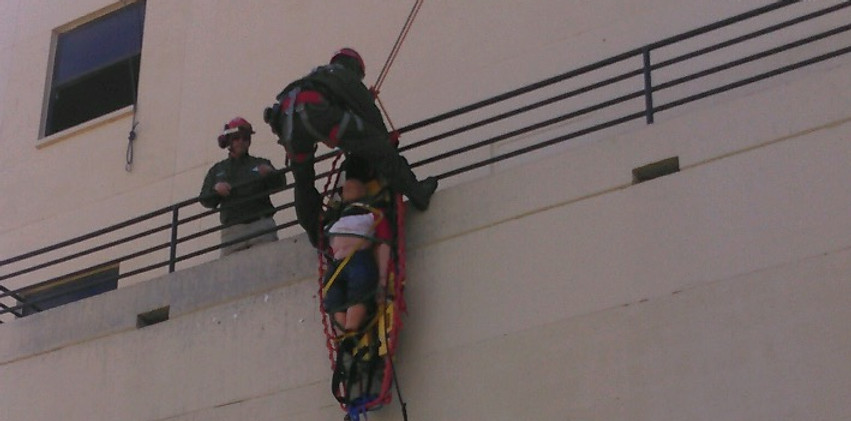URBAN SEARCH AND RESCUE
Technical Rescue requirements for Urban Search and Rescue cover 6 disciplines under The National Fire Protection Administration Standards 1006, 1670 and the other related Standards and Regulations under NFPA.This Intensive training is conducted in Live, Constructive and Virtual environments.
Technician Level for Structural Collapse
Technician Level for Rope Rescue
Technician Level for Confined Space Rescue
Technician Level for Vehicle Machinery Rescue
Technician Level for Trench and excavation Rescue
Awareness Level for Water Search and Rescue.

STRUCTURAL COLLAPSE RESCUE
IAW NFPA 106, 1670. The team is trained in structural collapse rescue in support of the National Incident Management System. The team gains access to victims disentangles, packages, and extricates the victims safely and without causing additional injury to the victims or rescuer. Teams operating at the technician level for structural collapse incidents must meet the requirements of:
Technician Level for Rope Rescue
Technician Level for Confined Space Rescue
Technician Level for Vehicle Machinery Rescue
Technician Level for Trench and excavation Rescue
Awareness Level for Water Search and Rescue.
STRUCTURAL COLLAPSE RESCUE
Teams functioning at structural collapses must be capable of hazard recognition, equipment use, and operating safely and effectively at incidents involving the collapse of light-frame, ordinary construction, unreinforced and reinforced masonry construction. Functions at these incidents involve the following:
Recognizing unique collapse or failure hazards
Conducting search operations intended to locate victims trapped beneath collapse debris
Accessing victims trapped beneath collapse debris
Performing extrication operations involving packaging, treating, and removing victims trapped beneath collapse debris.

ROPE RESCUE OPERATIONS
When victims are trapped or stranded above or below grade in rescue situations, sometimes the only means of reaching them and getting them to ground level may be by the use of rope systems. It may be necessary to lower rescuers into a confined space and to hoist a victim out with a mechanical advantage system made of life safety rope. Victims stranded on a row ledge, tower, power pole, or on an upper floor of a partially collapsed building may have to be lowered to the ground with life safety ropes. Operators must be capable of:
Recognizing a rope rescue incident when they are dispatched to one or come upon one in the course of their employment.
Selecting, constructing, and using rope-based mechanical advantage systems
Selecting, constructing, and using an appropriate belay system
Selecting, constructing, and using a lowering system
Properly tying all knots used by the rope rescue team
Appropriately packaging a patient in a litter
Selecting, constructing, and using a raising system in the high angle environment
Safely ascending and descending a fixed rope
Using litter attendants in the high angle environment

CONFINED SPACE RESCUE
The history of people working in tanks and other confined spaces is filled with stories of workers losing consciousness inside the spaces they were working. All too often, coworkers who entered the spaces attempting to rescue their friends were themselves overcome and only succeeded in complicating to the problem by adding more victims.

VEHICLE MACHINERY RESCUE
VMR mainly involves heavily trapped victims in machinery, multiple vehicles with difficult access or stabilization issues, or vehicles involved in some type of structural collapse.

TRENCH/EXCAVATION RESCUE
Trench construction occurs in virtually every city and town in North America, and in many jurisdictions it occurs daily somewhere within their boundaries. With all this excavation going on, cave-ins are bound to happen, and they do. According to statistics from the National Institute for Occupational Safety and Health (NIOSH) and the Occupational Safety and Health Administration (OSHA), an average of 60 to 100 workers die each year in trench cave-ins. NIOSH figures also show that 77 percent of those fatalities are construction workers; the remaining 23 percent are workers in other fields, including the fire/ rescue service.

WATER RESCUE
According to the National Center for Health Statistics (NCHS), drowning is the second leading cause of accidental death in North America. The majority of drownings occur in open water -lakes and rivers. Less than 10 percent happen in swimming pools.
